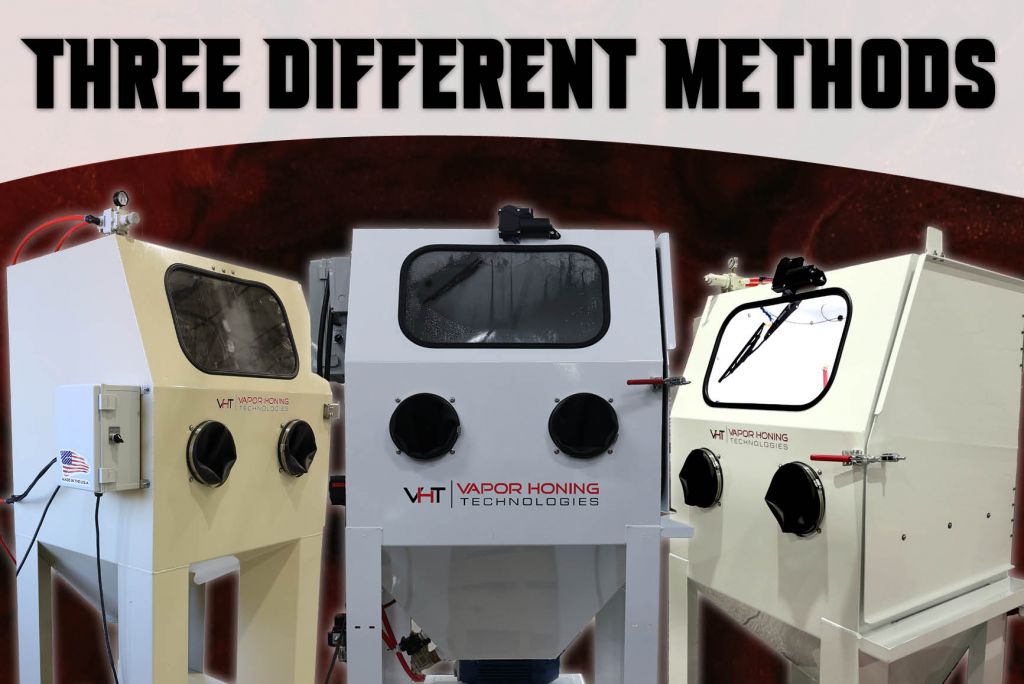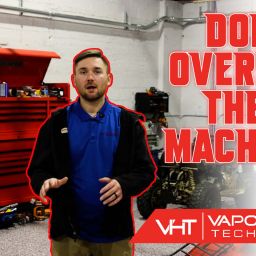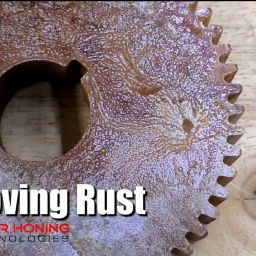
Surface Finishing Is What We Do
At Vapor Honing Technologies, surface preparation isn’t just a step in the process it is the foundation of everything we build. For over a decade, we’ve been at the forefront of abrasive blasting innovation in North America, helping everyone from weekend hobbyists to aerospace engineers achieve consistent results in their work. From restoring vintage automotive parts to prepping manufactured parts for final coating in a commercial facility, we understand that the finish matters just as much as the function.
What sets us apart is not just the quality of our machines. It’s our commitment to offering the right machine for the right job. This is why we manufacture machines across the three most relevant methods of surface finishing. This included our flagship wet blasting (vapor honing) cabinets, our dry blasting (sandblasting) units, to our efficient line of automatic parts washers, plus the Hydro Blast Series. Each of these machine types play a specialized role in restoring, cleaning, or preparing your parts. Let’s break them down!
Wet Blasting
Wet blasting, also known as vapor honing, combines water, abrasive media, and air pressure into a slurry that’s blasted onto the part surface. This mixture smooths, polishes, and cleans without damaging the underlying material. It’s an ideal choice when you need a clean, consistent finish without the harshness of traditional methods.
Best for:
-
Cosmetic “OEM” finishes
-
Parts that must be abrasive free after blasting like engines, or medical equipment
-
Prep before anodizing or coating
-
Deburring manufactured components
At VHT, our wet blast cabinets are engineered to deliver high performance and long-term durability. We even have a Life Time Warranty on our wet blasting cabinets. They’re built with heavy-duty HDPE or metal enclosures, sealed for a dust-free environment, and available with options like turntables, closed-loop water systems, and foot pedal controls. We also offer additives that address some of the challenges associated with wet blasting like anti-corrosion formula to prevent flash rusting, or anti-microbial formula to prevent bacterial growth in the water.
Sand Blasting
Dry blasting, or sandblasting, uses only air and abrasive media to strip away heavy corrosion, paint, mill scale, or grime. It’s fast, powerful, and effective for more aggressive surface prep. Sand Blasting also has more options for abrasives you can use than wet blasting. Organic matter like walnut shell, or corn cob, are viable options for sand blasting, where they aren’t for wet blasting.
Best for:
-
Rust removal
-
Stripping paint or powder coat, FAST!
-
Heavy-duty cleaning on steel or cast iron
-
Surface texturing
Our Dry Blast Series offers straightforward, powerful, abrasive blasting perfect for high-throughput environments like industrial manufacturing. Only available in metal cabinets. While it’s more aggressive than wet blasting, it requires dust management solutions and personal protective equipment to operate safely. You can read more about the required safety precautions in one of our latest blogs. One other aside is that in terms of upfront cost sand blasting is typically more cost efficient then a wet blasting cabinet, or parts washer.
Parts Washing
Sometimes you don’t need abrasives in your process, you just need a part to be clean. Our Auto Parts Washers and Hydro Blast Series do just that, using pressurized water, heat, and detergents to wash away oil, grease, and grime.
Best for:
-
Cleaning oil-soaked engine parts
-
Pre-assembly or inspection prep
-
Degreasing aluminum, plastic, or steel
-
Low-maintenance cleaning, “Set it and Forget It,” with an Auto Parts Washer
The Hydro Blast offers added versatility with a handheld wand you use manually. It features dual settings for broad and precise cleaning. The Hydro Blast offers optional automation, but many people opt to use it manually due to the raw PSI of 1400 which often can degrease a part in seconds. On the other hand, there are the Auto Parts Washers, which provide timed cleaning cycles with minimal manual work. These systems are ideal for improving shop efficiency with a high utility machine. As long as you don’t need a shiny or textured finish on your parts you can’t go wrong with a Hydro Blast, or Auto Parts Washer.
Many shops and industrial scale operations will actually use Part Washing in tandem with an abrasive blasting cabinet. A garage that restores vintage cars, for example, would use a parts washer to degrease a part before sending it over to the wet blast cabinet. This would make the polishing process quicker in the wet blast cabinet and keeps the water cleaner for longer.
Final Thoughts
Each method has its own demonstratable strengths that can make it pretty clear what is the best for specific tasks, and overarching workflows. However, we don’t adhere strictly to one size fits all sales pitches. There is a lot of nuances to surface finishing that allows for surprising overlap. Sand blasting may have a reputation of being the most aggressive method for surface finishing, but if the end user was using soda bicarbonate as their abrasive of choice, then they would be getting results similar to results from soda in a wet blast cabinet. Also as previously mentioned these three methods could be used in tandem with each other for specific workflows. The point is that it doesn’t hurt to keep researching, asking questions, and gathering new information.
This seems like a good opportunity to mention that VHT offers Free Application Testing. If you know what kind of parts you will be working with you can send us samples to blast in our show room. Our professionally trained sales team can provide you a full report of the results, even measuring the surface roughness! To participate you can fill out the form linked here or contact a member of our sales team at (828)-202-5563. We also offer over a decade’s worth of research for free on our YouTube channel. Regardless the manner you pursue your information we are there to help. Have a nice day!








